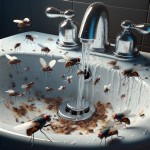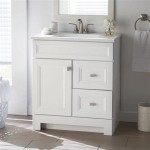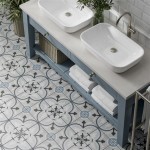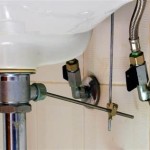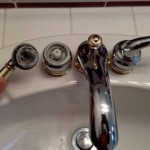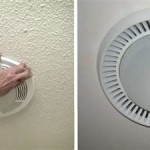Can You Run Two Bathroom Exhaust Fans to One Vent? A Comprehensive Guide
The question of whether two bathroom exhaust fans can be connected to a single vent is a common one for homeowners undertaking bathroom renovations or dealing with ventilation issues. The practice, while seemingly economical and space-saving, presents a number of complexities and potential drawbacks that require careful consideration. This article aims to provide a thorough examination of the factors involved, exploring the potential benefits and the significant risks associated with this type of installation.
The fundamental purpose of a bathroom exhaust fan is to remove moisture and odors from the bathroom. A properly functioning fan prevents the buildup of humidity, which can lead to mold growth, structural damage to the building materials, and generally unhealthy indoor air quality. When considering the feasibility of connecting multiple fans to a single vent, the ability of the ventilation system to continue to perform these crucial functions effectively is paramount.
Connecting two bathroom fans to a single vent is not generally recommended by building codes or HVAC professionals. While it might appear to be a cost-effective solution in the short term, the potential for backdrafting, reduced airflow, and system inefficiency can outweigh any initial savings. Building codes typically specify the required airflow for bathrooms based on their size and usage, and these requirements are designed to ensure adequate ventilation. Combining fans might not automatically meet these code requirements, and could even create code violations.
Airflow Dynamics and System Capacity
The primary concern when connecting two fans to a single vent revolves around airflow. Each exhaust fan is designed to move a specific volume of air, measured in cubic feet per minute (CFM). The CFM rating of a fan indicates its capacity to remove air from the bathroom. When two fans share a single vent, the total airflow capacity of the system needs to be carefully evaluated. Simply adding the CFM ratings of the two fans together does not guarantee that the system will perform as expected.
The ductwork connecting the fans to the vent introduces resistance to airflow. This resistance is affected by the length of the duct, its diameter, the number of bends, and the material it's made from. If the ductwork is undersized or has too many bends, it can create excessive backpressure, hindering the ability of the fans to move air effectively. When two powerful fans are connected to a single, inadequate duct, the backpressure increases significantly, resulting in both fans operating at reduced efficiency.
Furthermore, the design of the ductwork and the connection points is critical. If the two fans are directly connected to the main duct without proper diverters or dampers, the airflow from one fan can impede the airflow from the other, leading to reduced ventilation performance and potential backdrafting. Backdrafting occurs when air from one bathroom is drawn into the other through the exhaust fan, effectively negating the purpose of the ventilation system and potentially spreading odors and moisture.
To determine the suitability of connecting two fans to a single vent from an airflow perspective, a professional HVAC technician should be consulted. They can assess the existing ductwork, calculate the total airflow requirements for the bathrooms, and determine whether the system can handle the combined load. They can also recommend modifications to the ductwork or suggest alternative ventilation solutions to ensure proper airflow and prevent backdrafting.
Potential for Backdrafting and Condensation
Backdrafting represents a significant concern when combining bathroom exhaust fans onto a single vent. As previously mentioned, backdrafting occurs when air from one bathroom flows back into the other through the exhaust fan ductwork. This can happen if one fan is operating while the other is not, or if the ductwork is improperly designed. The fan that is not operating can essentially become an inlet for the exhaust air from the other bathroom, defeating the purpose of ventilation.
Backdrafting can lead to several problems. It can reintroduce moisture and odors into the bathroom, increasing the risk of mold growth and unpleasant smells. It can also spread contaminants, such as mold spores or volatile organic compounds (VOCs), from one bathroom to the other. In colder climates, backdrafting can also cause condensation within the ductwork. This condensation can drip back into the bathrooms, leading to water damage and further promoting mold growth.
The risk of condensation is particularly high in uninsulated ductwork that runs through unheated spaces, such as attics or crawl spaces. When warm, moist air from the bathrooms enters the cold ductwork, the moisture condenses on the interior surfaces. Over time, this condensation can accumulate and cause significant damage. Insulating the ductwork can help to mitigate the risk of condensation, but proper ductwork design and sealing are also essential.
To prevent backdrafting and condensation, several measures can be taken. These include installing backdraft dampers in the ductwork, ensuring the ductwork is properly sealed and insulated, and consulting with an HVAC professional to design a ventilation system that minimizes the risk of these problems. Backdraft dampers are one-way valves that allow air to flow in one direction only, preventing air from flowing back into the bathroom when the fan is not operating. Sealing the ductwork prevents air leaks, which can also contribute to backdrafting and condensation.
Code Compliance and Alternative Solutions
Building codes and regulations generally dictate the requirements for bathroom ventilation, including the required airflow rates and the proper installation of exhaust fans. Connecting two bathroom fans to a single vent might violate these codes if it does not meet the minimum airflow requirements for each bathroom. Building inspectors typically check for proper ventilation during inspections, and non-compliance can result in fines or requirements to correct the installation.
Furthermore, some codes may specifically prohibit the connection of multiple exhaust fans to a single vent, regardless of the airflow capacity. These regulations are in place to ensure proper ventilation and prevent potential problems such as backdrafting and reduced system efficiency. Before proceeding with any modifications to the ventilation system, it is essential to consult with local building officials or a qualified HVAC professional to ensure compliance with all applicable codes and regulations.
If connecting two fans to a single vent is not feasible or compliant with building codes, alternative solutions should be considered. One option is to install a separate vent for each fan, ensuring that each bathroom has its own dedicated ventilation system. This is generally the preferred method, as it provides the most reliable and efficient ventilation. Another option is to upgrade the existing ductwork to a larger diameter to accommodate the combined airflow of the two fans. However, this may require significant modifications to the building structure and may not always be practical.
A further alternative is to install a single, more powerful exhaust fan that is capable of ventilating both bathrooms. This can be achieved by installing a fan with multiple inlets that can be connected to separate ducts from each bathroom. The fan should be sized appropriately to meet the combined airflow requirements of both bathrooms. This approach can be more cost-effective than installing two separate fans, but it requires careful planning and installation to ensure proper ventilation and prevent backdrafting.
In addition to the physical design of the ventilation system, it is also important to consider the type of exhaust fans that are used. Some fans are designed for continuous operation, while others are designed for intermittent use. If the fans are connected to a single vent, it is important to ensure that they are compatible and that they can be operated independently. Using a fan with a built-in timer or humidity sensor can also help to ensure that the bathrooms are properly ventilated and that the fans are not running excessively.
Ultimately, the decision of whether to connect two bathroom exhaust fans to a single vent should be based on a careful evaluation of the specific circumstances, including the size of the bathrooms, the existing ductwork, the local building codes, and the potential risks. Consulting with a qualified HVAC professional is essential to ensure that the ventilation system is properly designed and installed and that it meets all applicable requirements. While the idea of combining fans onto a single vent may seem appealing from a cost or space-saving perspective, the potential for problems and code violations often outweighs any perceived benefits. Prioritizing proper ventilation and code compliance will ensure a healthy and safe indoor environment.
Hvac Talk Heating Air Refrigeration Discussion
Hvac Talk Heating Air Refrigeration Discussion

How To Use An In Line Exhaust Fan Vent Two Bathrooms Diy Family Handyman

Hvacquick How To S Wiring 1 Fan Serving 2 Baths With Switch Per Bath Lights From Com
2 Bathroom Fans Connected To 1 Roof Vent Diy Home Improvement Forum
Can I Vent Multiple Bathroom Fans To The Same Hole Using Flexible Duct And Connectors Or Will They Blow Air Into Each Other Instead Of Venting Outside Quora

Bathroom Vent Piping To Near Exterior Inspecting Hvac Systems Internachi Forum

Ventilation Pa Energy Code

Bathroom Exhaust Fans Building America Solution Center

Choosing The Right Bath Fan Fantech
Related Posts
